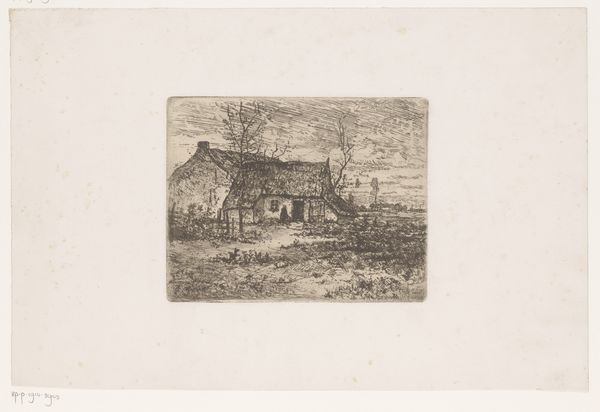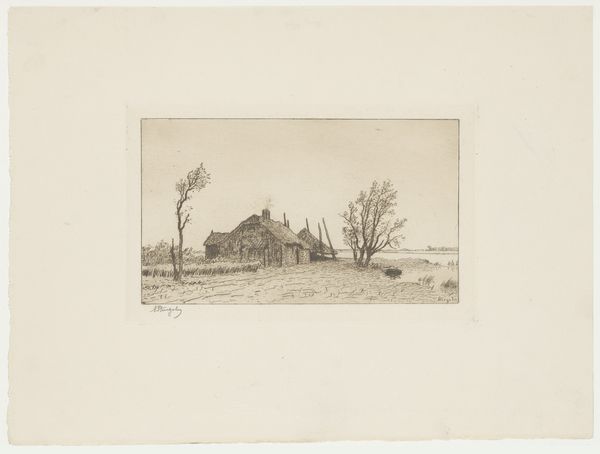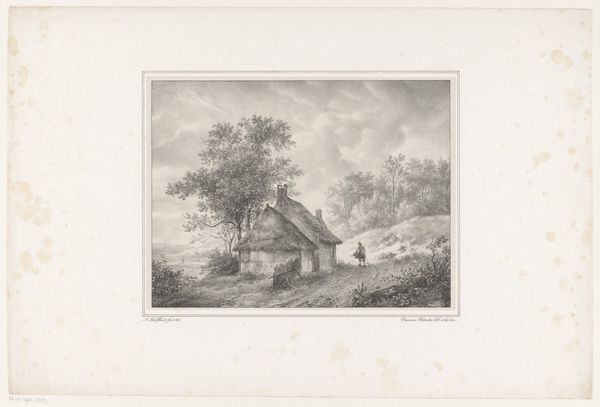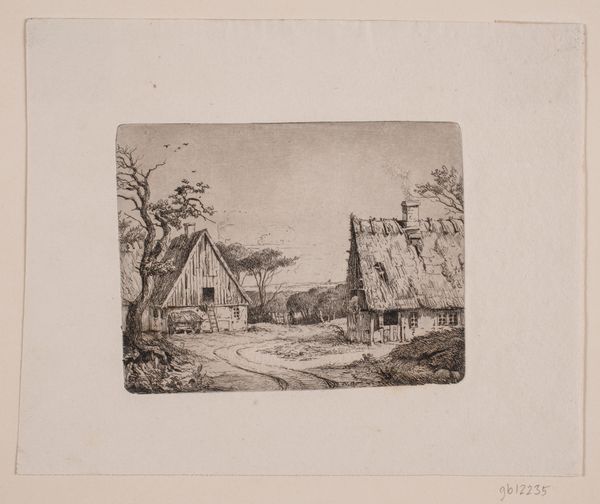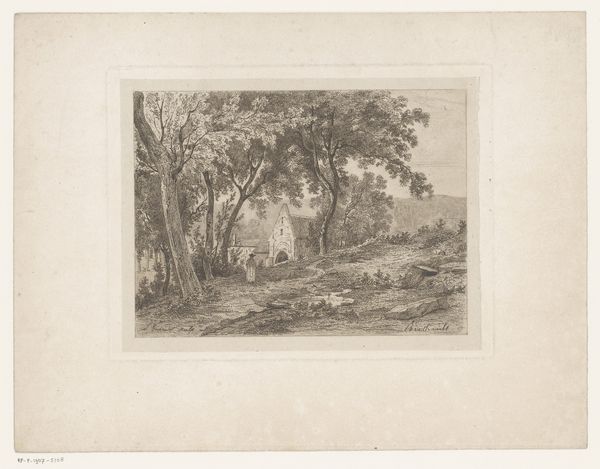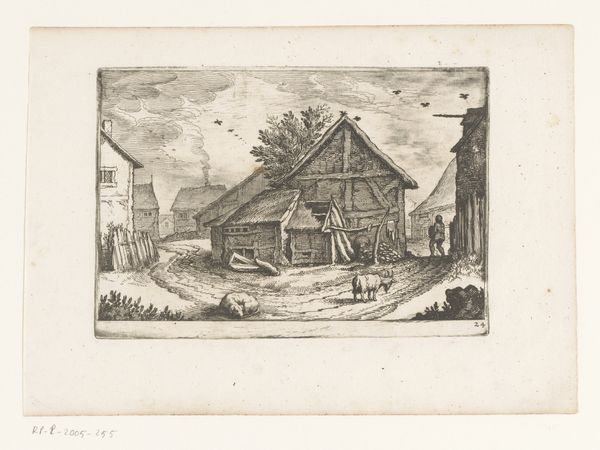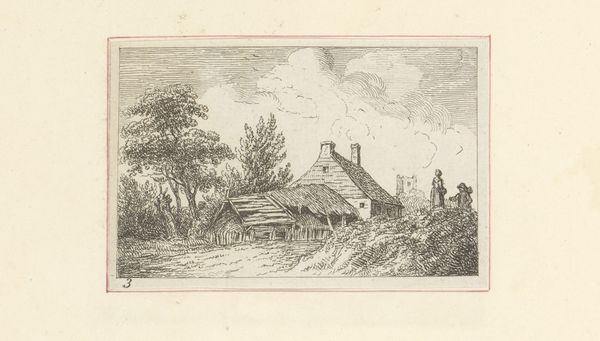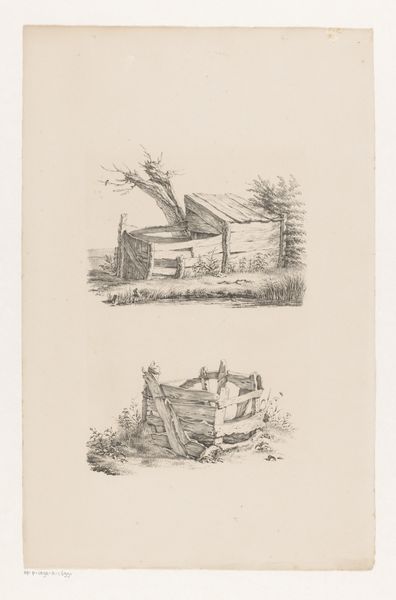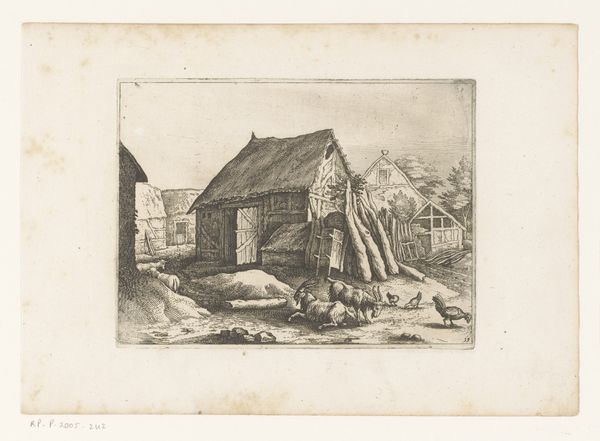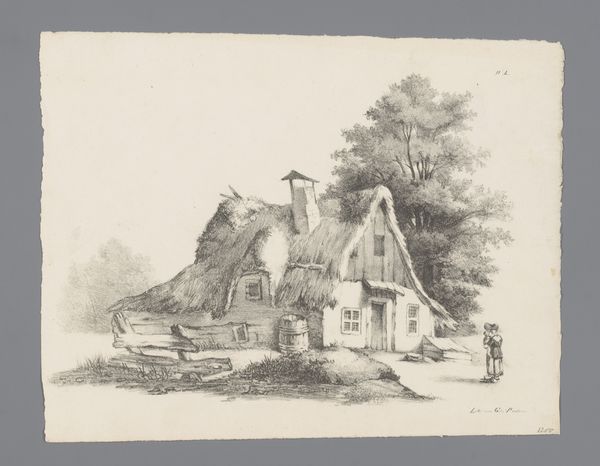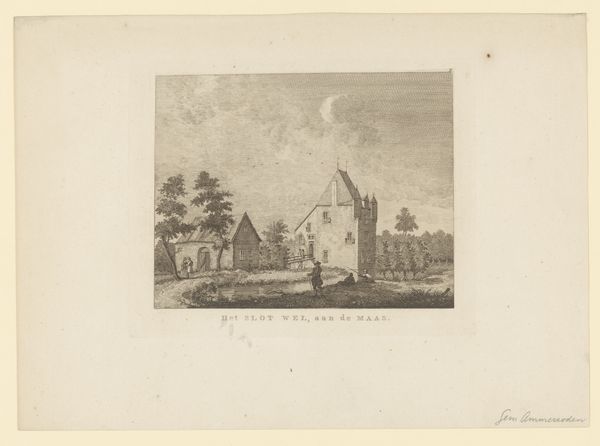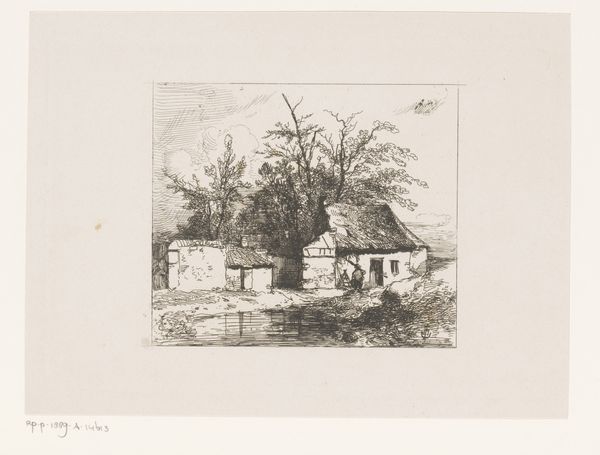
drawing, print, etching
#
drawing
# print
#
etching
#
landscape
#
genre-painting
Dimensions: height 110 mm, width 147 mm
Copyright: Rijks Museum: Open Domain
Editor: So, this is Henri Rul’s etching, "Kind en kippen bij een boerderij met waterput," dating from between 1872 and 1913. It feels so… quiet, almost dreamlike in its depiction of this rural scene. The light seems so soft. What strikes you when you look at it? Curator: Well, first, I notice the deliberate choice of subject matter and the implications for its intended audience. Etchings like these became quite popular in the late 19th century, and they participated in a kind of romantic nationalism. Editor: Romantic nationalism? Curator: Yes, think about it. The artist chose a scene depicting an idealized rural life. He’s not showing the gritty realities of agricultural labor, but rather a serene depiction of childhood innocence, chickens, and rustic architecture. Ask yourself, who would purchase such a print? It's more likely an urban, middle-class audience yearning for a simpler past or a connection to the land that industrialization was rapidly changing. What details tell us that? Editor: I guess, the well-maintained buildings and the almost quaint composition point to that. Also, the figure looks well-kept, almost staged. The image isn’t presenting a problem or social commentary; it's an aestheticized snapshot. Curator: Precisely! And by reproducing these scenes as prints, the imagery becomes more accessible. The print is a piece of commodity and promotes a certain narrative. Editor: That is a very interesting way to see it; I thought I would only see some chickens. Now I see so much more regarding this period's fascination with the rural. Thanks! Curator: And thank you for directing my attention. It is crucial to discuss how art intersects with social narratives, which is invaluable.
Comments
No comments
Be the first to comment and join the conversation on the ultimate creative platform.

